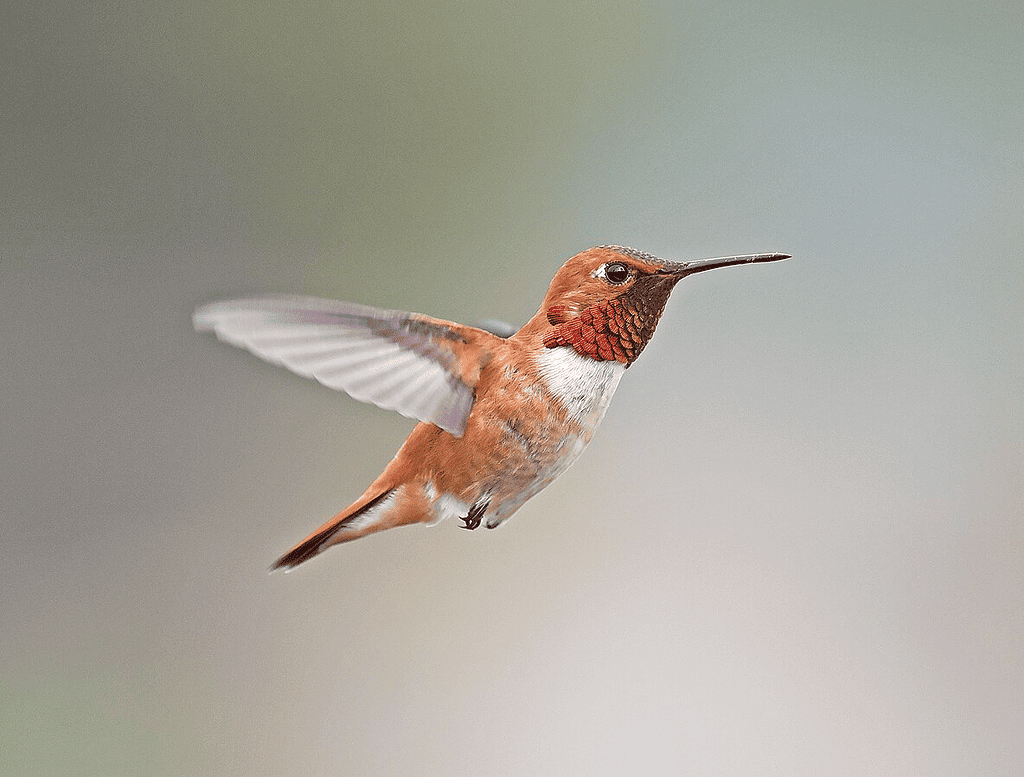
Imagine a bird that weighs less than a nickel, yet embarks on an epic 2,000-mile journey twice a year. You’ve just envisioned the Rufous Hummingbird, one of nature’s tiniest yet most resilient adventurers. Tiny, feisty, and surprisingly bold; here’s the scoop on the Rufous Hummingbird (Selasphorus rufus). They’re the minuscule boss of the hummingbird world.
Rufous Hummingbird Main Description
Hummingbirds are among the coolest creatures you can imagine. In fact, the entire hummingbird family (Trochilidae) displays a unique array of traits. Most hummingbirds weigh less than 0.05 pounds (25 gms) — that’s less than a paperclip. This only makes all their other features all the more spectacular.
Have you ever wondered how a hummingbird hovers in mid-air, seemingly defying gravity? It’s all in the wings. Unlike most birds, whose wings flap up and down, a hummingbird’s wings move in a figure-eight motion. This unique action creates lift on both the upstroke and the downstroke, allowing them to hover effortlessly.
From flying in reverse and hovering with uncanny precision to even flying upside down, hummingbirds are truly the acrobats of the avian world. Yet, somehow even in a family filled with wonders, the rufous hummingbird still manages to stand out.
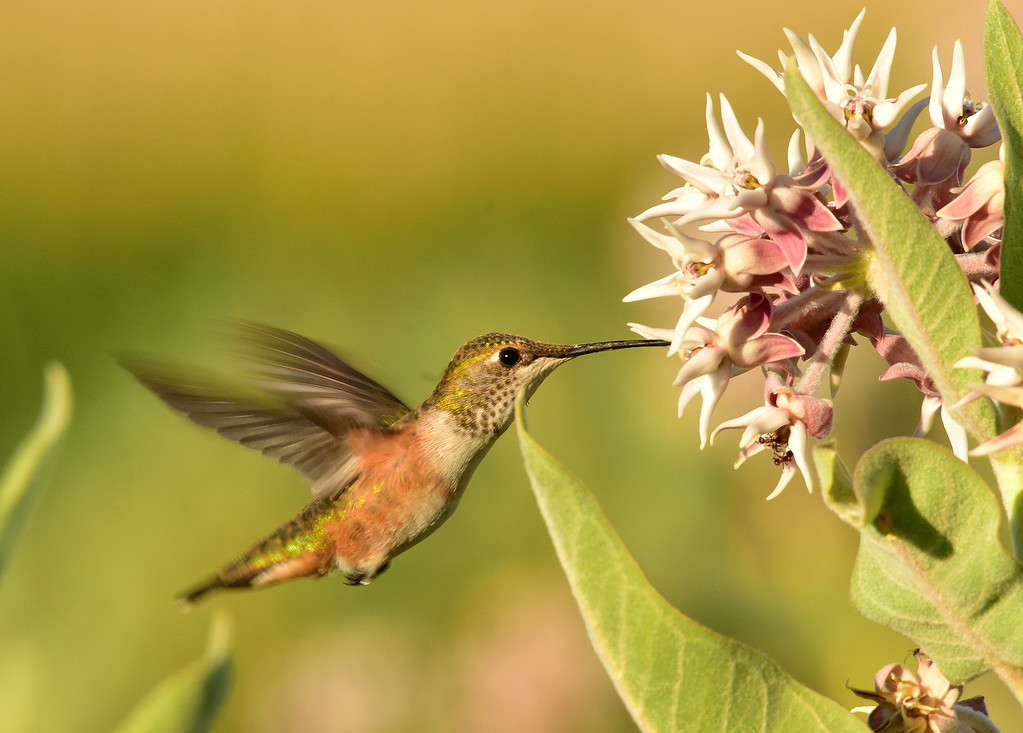
These little guys love sugar; nectar is their primary source of energy. They have a specialized, extendable tongue that works like a micro-pump to extract nectar from flowers. While they do eat insects for protein, their high-energy lifestyle demands a constant supply of sugar. That’s why you’ll often see them darting from flower to flower, trying to get their fix.
You’d assume that given their feisty fighter temperament rufous hummingbirds would lean toward the larger size spectrum among their hummingbird cousins yet the opposite is true! Rufous hummingbirds are freakishly small. They’re just 3 inches (8 cm) long. But that’s not even the craziest thing about them.
Rufous hummingbirds have a broad range that extends across North America, from Alaska down to Mexico. During the breeding season, they are commonly found in the Pacific Northwest, Alaska, and western Canada. In these areas, they enjoy a habitat of open woodlands, gardens, and meadows where they can access flowers for nectar.
As the seasons change, so does their location. These tiny birds undertake an incredible migratory journey, flying thousands of miles to winter in warmer climates. During the winter months, they’re most commonly found in the mountainous regions of Mexico. Along their migratory routes, they can also be spotted in various parts of the western United States. It’s this stunning migration that makes them all the more impressive.
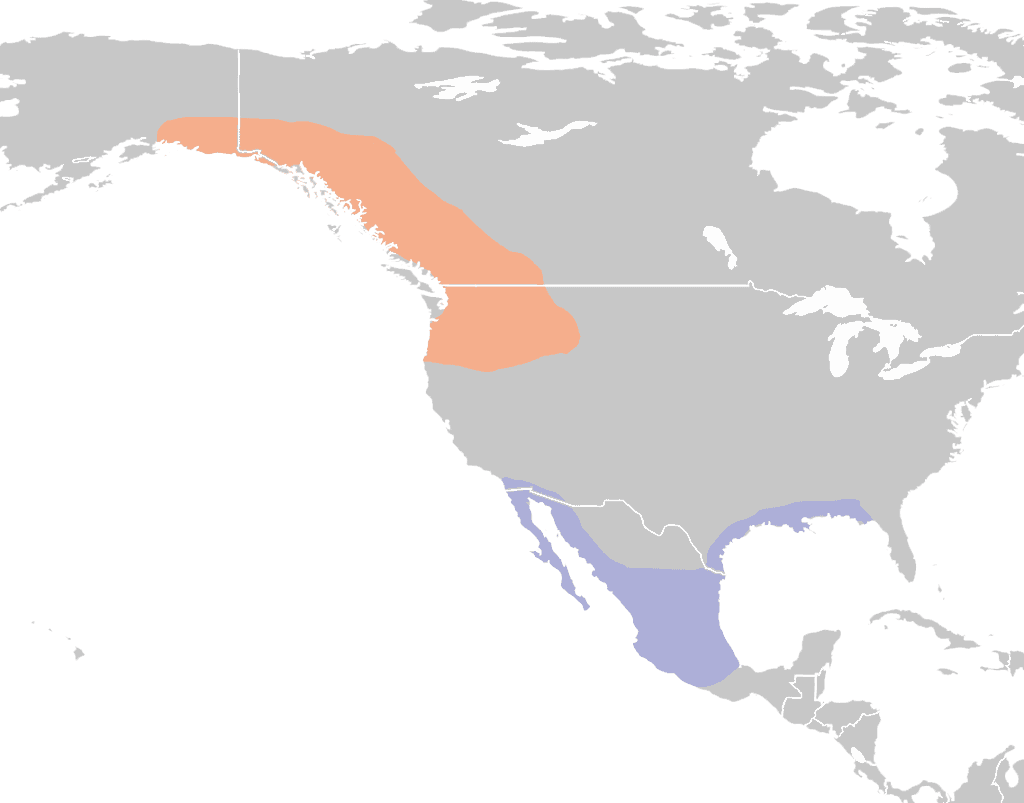
Why are Rufous Hummingbirds called ‘Rufous Hummingbirds’
Notice the reddish-brown tinge (not the orangish-red one on the neck, that’s different!) that runs almost the entire length of the body. That particular shade of red; that glows like copper in the bright overhead sun — that’s what rufous means. In other words, ‘rufous’ is a specific color that these birds happen to have.
It’s the same thing with their scientific name: Selasphorus rufus.
In science at large names are generally derived from ancient languages like Latin or Greek. For example, Panthera pardus is the scientific/Latin name for leopards.
The same convention holds true for ornithology, the science of studying birds. However, in ornithology (the science that studies birds) there’s a high level of significance in including either visibly observable features or easily identifiable auditory calls as part of a bird’s name.
This is to make identification easy. Birds are hard to spot and even harder to observe so when the literal name of a particular bird translates to the color of its body or the sound it makes- you immediately know what to look for or what to listen to. For instance, whistler birds whistle. In the case of the Rufous Hummingbird (Selasphorus rufus), rufous/rufus actually refers to the shade of red that adorns their plumage. So yes, it all boils down to the color, basically.
An insane migration and biological adaptations
If you think your last road trip was exhausting, consider this: during migration, a rufous hummingbird’s heart can beat up to 1200 times per minute. It’s the equivalent of you sprinting at top speed for the entire length of a marathon. Yet the rufous hummingbird accomplishes this without the luxury of rest stops stocked with Gatorade and protein bars. Instead, it relies on an internal GPS honed by generations of migratory knowledge.
Rufous hummingbirds follow a ridiculously long route for migration every year. Every year, they prepare for a long trip from their traditional nesting sites in the USA (Idaho, Oregan, and a few parts of southern Alaska) as well as a few parts of Canada (British Columbia) to their winter grounds all the way down in Western Mexico. These 3-inch (8 cm) long birds can end up covering a whopping 3000 – 4000 miles (4828-6437 km)! When they’re not flying, they’re almost exclusively fueling.
To keep up with the demands of this long journey, these tiny birds eat a lot. They have straight and slender beaks that are perfect to reach deep into flower parts. This nifty adaptation helps in their daily visits to over 1,000 flowers. They inspect each flower meticulously for nectar and also snack on the small insects and arachnids that they find scuttling around on the same flowers.
Fun fact: Rufous hummingbirds also have a specialized tongue! Their tongues are tubular in shape so they don’t waste too much time on any one flower and can lap up nectar quickly.
Male and Female Rufous Hummingbirds
Like most birds, rufous hummingbirds are sexually dimorphic. This means males and females are significantly different. It’s not just physical differences — migration is also different for male and female hummingbirds.
“Different age-sex categories of rufous hummingbirds use alternative routes and differ in migration cycles and distributions,” said the Jose Rousseau, a Ph.D. candidate in the OSU College of Forestry, and author of a recent study on rufous hummingbirds. “Our results seem to indicate that the age-sex categories could be affected in different ways by things like habitat loss and climate during migration. If we keep that in mind, we can make conservation efforts that help these amazingly feisty little creatures – and I describe them that way with the utmost respect – have the resources they need during their migration across the landscape.”
These birds look a bit different in every stage of their life however the general trend that differentiates males from females is brightness of color. Males are more rufous than females and have copper on their upper parts, flanks, and a bit on the sides of their faces as well. Funnily enough, the most distinctive feature of the male rufous hummingbird isn’t even rufous!
Males have incredibly iridescent gorgets (neck feathers). In the bright light, this part of the male glows a bright reddish orange. Females, on the other hand, lack the distinct gorget of males and are rather a shade of drab green or gray and are paler (lighter) in comparison.
Rufous Hummingbird Facts
By virtue of their breeding location (i.e. the northernmost breeding range of any extant hummingbird species in the world), it comes as no surprise that rufous hummingbirds also have the longest migration of any hummingbird species in the world!
Mothers feed their fledglings using a rather disgusting method. They regurgitate (read: vomit) a sweet concoction of insects and nectar directly into their younguns’ mouths.
Rufous hummingbirds don’t have time for strict gender roles and spin their own little twist on the old drama queen adage. In this species, it’s the males that dive headfirst into drama. When it’s time for courtship rituals, males fly steeply upward in a straight line and then dive back down, as steeply as they flew up – whining and whizzing as they try their best to impress the ladies. Males are seemingly quite successful as well, often breeding with more than one female in a single season.
Rufous hummingbirds are often confused with Allen’s hummingbird, another member of the Trochilidae family. Parts of each species’ range overlap with one another – especially along the western coast of the USA in parts of northern California and southern Oregon.
Rufous hummingbirds are known for their aggressive and territorial behavior, particularly around food sources.
Despite their small size, Rufous Hummingbirds are hardy birds, capable of adapting to a range of environments, from mountain meadows to suburban gardens.
Their heart rate can exceed 1,200 beats per minute, one of the highest of any vertebrate.
Recent Studies on Rufous Hummingbirds
In 2012, researchers were able to pinpoint a part of the hummingbird brain as the part responsible for their extensive and efficient feeding behaviors. Hummingbirds don’t lap up all that nectar for just their wings; they do it for literal brain power.
The hippocampal formation (HF), a part of bird brains, plays a critical role in enabling hummingbirds with their ridiculous ability to hover mid-air and drink as much nectar as they possibly can from every single flower they visit. In fact, when researchers compared hummingbird HFs with the HFs of 28 other bird species, they realized that hummingbird HFs were two to five times larger than any of the other species studied.
“As soon as we looked at these specimens it was obvious that something was different in the hummingbirds’ brains than other species,” said Dr. Doug Wong-Wylie, one of the researchers from the University of Alberta, in a news release.
Again in 2019, researchers were in for a bit of a surprise when they identified a hybrid zone where interbreeding of rufous and Allen’s hummingbirds may have been taking place. To test their hunch, Brian Myers and his team from San Diego State University chose to observe the mating displays of male hummingbirds in the areas, as each species had its own distinctive aerial displays.
Researchers were able to document modified behaviors (related to courtship) as well as a few morphological discrepancies uncharacteristic of purebred specimens of each species. In an age of changing climates and drastic drops in biodiversity, Myers stressed the importance of understanding speciation in present times.
“As biodiversity continues to drop, it’s more important than ever to understand how new species form and what maintains species barriers once they’re made – is there a certain habitat or other resources that require protection? Is it more related to sexual selection? Hybrid zones are an ideal tool with which to study this.” said Myers in an article with the American Ornithological Society.

Conservation Status
Habitat loss on both breeding grounds and wintering grounds has made life a bit tougher for these birds; they’re listed as a Near Threatened species. They also face undue predator stress from free-ranging pet cats.
Apart from running away from every grumpy cat, these birds face yet another dangerous yet innocuous threat – windows. Although it sounds odd, bird collisions with glass (and transparent) windows make up for a staggering number of bird deaths.
However, the Rufous Hummingbird has lost two-thirds of its population since 1970, as indicated in the 2022 State of the Birds report. The bird is among 70 species on the “Tipping Point” list, which suggests that they could lose another half of their populations if conservation efforts are not stepped up.
Mike Parr, president of the American Bird Conservancy, emphasizes the importance of birds as indicators of environmental health, often described as “the canary in the coal mine.” The reasons behind the decline are multifaceted, ranging from habitat loss due to climate change and human development to factors like glass collisions, pesticides, and invasive species such as domestic cats. So while the species is not in any immediate danger, we shouldn’t really get complacent.
“We don’t want to see birds disappear. So, rather than waiting until the last second, from a conservationist point of view- you just don’t want to see the bird get there in the first place,” Mike Parr, president of the American Bird Conservancy told the CNN. “Unfortunately, wildlife doesn’t have its own voice.”
But you can help, too, says Parr.
“We’ve got an obsession with mowing grass and keeping everything tidy. Nature’s not tidy and so if you can tolerate some untidiness in your yard -maybe you can find a part of your yard that you’re gonna let be native and let the grass grow a bit. That’s gonna be better for wildlife, especially if you’re not using pesticides.”
“Nature is messy. Let it be messy. There’s a beauty in there.”
Rufous Hummingbird Pictures (and videos)
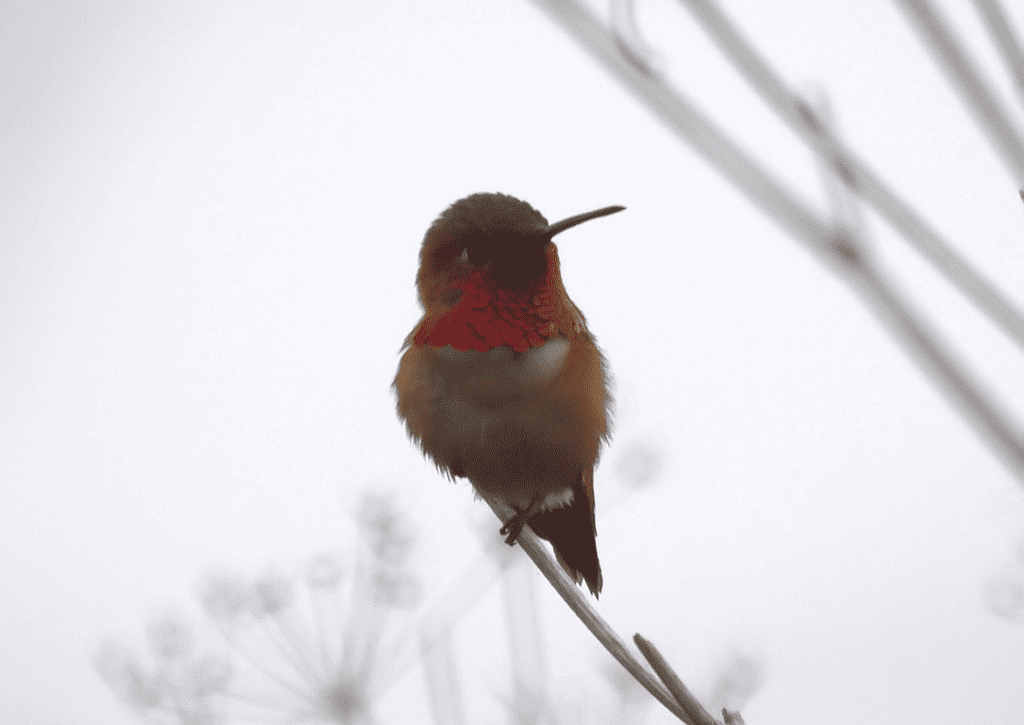
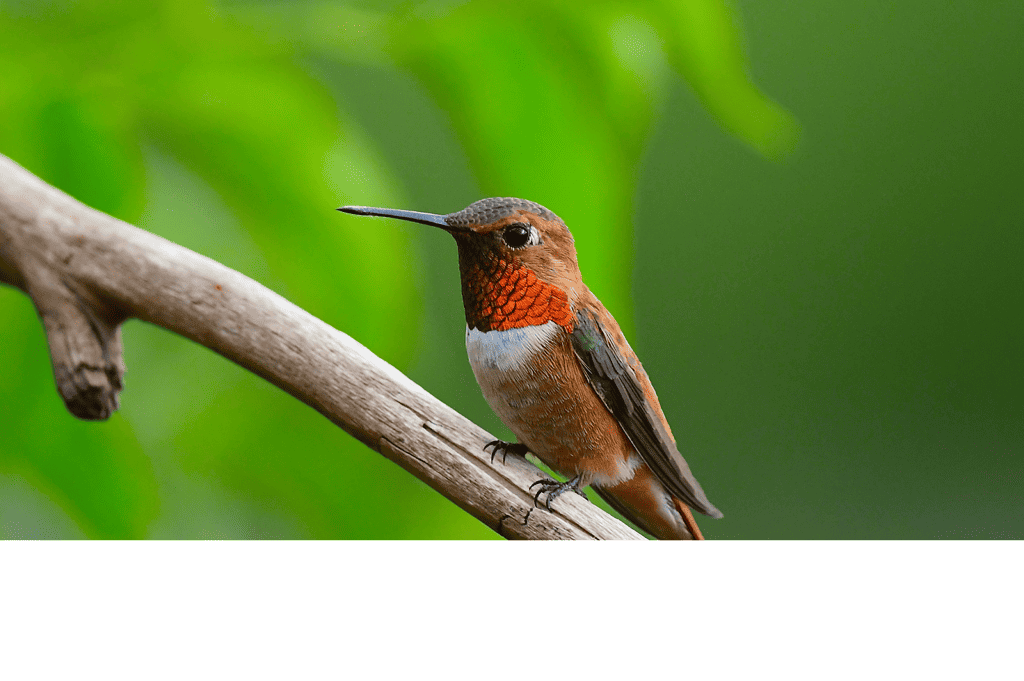


Conclusion
So, here’s the final lay-down on rufous hummingbirds. From fighting off smaller and larger birds alike to protect their favorite patches of flowers to literally flying over 3,000 miles annually. These birds have moxie and although given their near-threatened status, I wouldn’t bet on these tiny (but feisty) birds disappearing anytime soon.


